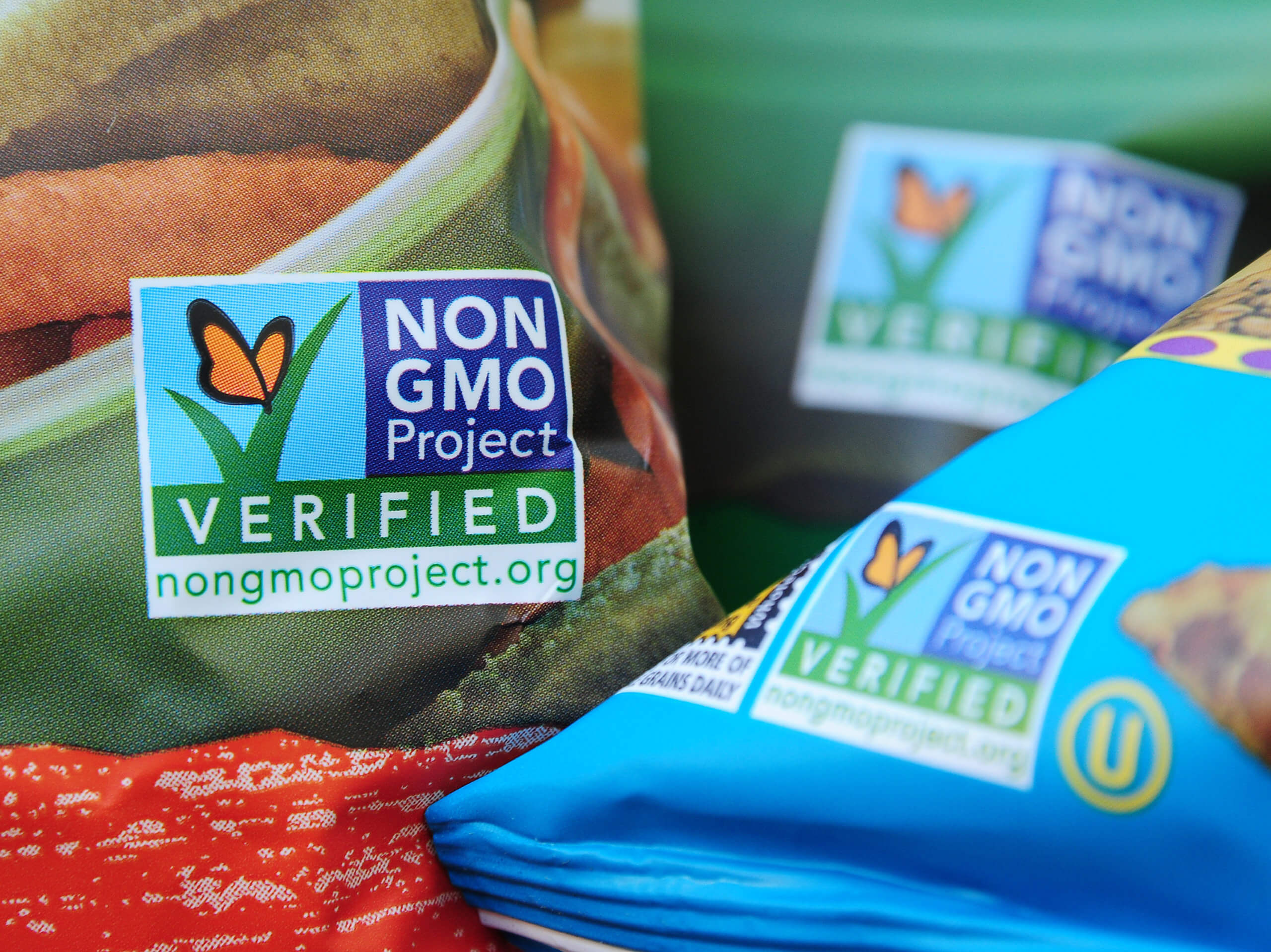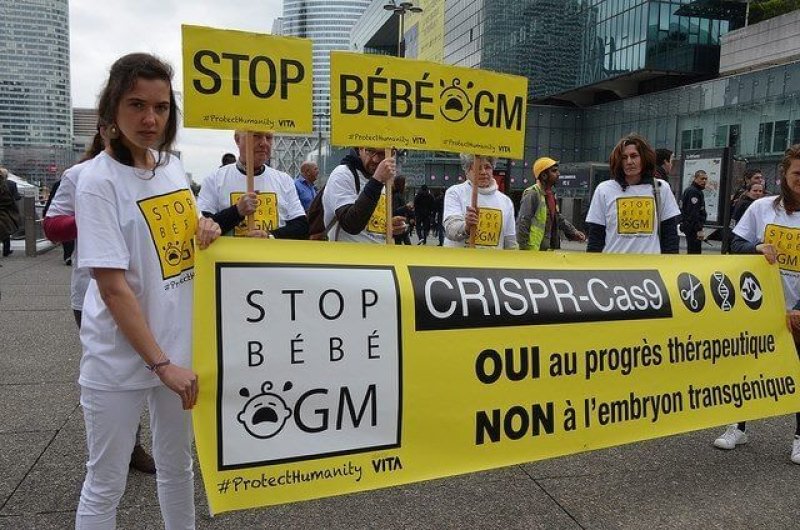These groups are now running the very same play again in Europe, in a bid to halt loosening restrictions on gene-edited crops, developed with new breeding techniques (NBTs) like CRISPR-Cas9.
Farmers and scientists generally view these advances in plant-breeding favorably, noting they can help further reduce pesticide use, add nutrients to staple foods and improve crop yields, among dozens of other significant benefits. Some experts are even predicting NBTs could spur another Green Revolution in farming. Watching these developments unfold, the European Union (EU), though traditionally deeply skeptical of crop biotechnology, is warming to gene-edited crops, and may revise its regulations in the very near future. A study sponsored by the European Commission investigating the risks and benefits of crop gene editing [was published on April 29].
But there’s an added layer of complexity. Although the EU is flirting with more sensible crop gene-editing rules, it has already mandated through its Green Deal and Farm-2-Fork policies that 25% of its farmland be converted to organic production and that farmers reduce their synthetic pesticide use by 50%. The continent’s politically powerful anti-GMO groups have used this new commitment to organic agriculture as a way to block the introduction of gene-edited crops in the EU. Corporate Europe Observatory (CEO), for example, recently alleged that:
With the European Green Deal and the Farm to Fork Strategy, the Von der Leyen Commission has committed to a fundamental shift away from industrial agriculture as we know it today …. This creates an existential crisis for those corporations that are dominant both in the pesticide and in the commercial seed market, notably Bayer, BASF, Corteva (DowDupont) and Syngenta (ChemChina).
As we’ll see, this is, at best, lying by omission. The seed giants, of course, see a big opportunity if the EU reverses course on its gene-editing rules—but so do public universities and smaller plant-breeding firms, all of whom are beholden to farmers–the customers who actually buy their products. Moreover, there is solid evidence that gene editing is perfectly compatible with the goals of organic agriculture, and thus can help Europe achieve its sustainability targets, a fact already acknowledged by some EU officials.
A corporate ploy?
The allegation that ‘Big Ag’ is trying to deregulate the gene-edited seed market in Europe solely because it is “set to lose a large share of [its] profits from selling pesticides” paints a woefully inadequate picture of the situation. Yes, Bayer has been hit hard by the multi-billion dollar lawsuits alleging that its weedkiller glyphosate (Roundup) causes cancer. And yes, selling gene-edited seeds into a market that is heavily restricted (the EU only grows a single biotech crop commercially) would be a boon to the industry giants. But they’re not the only ones who would benefit, and there’s a good reason for that.

Breeding gene-edited plants is quick, inexpensive process compared to developing transgenic (GMO) crops. Any company or university, big or small, with the appropriate expertise can utilize NBTs to create products farmers want. Far from giving Bayer and other seed giants more control of EU agriculture, less stringent gene-editing rules would actually facilitate more competition for the established firms. As plant molecular biologist Petra Jorasch noted in a February story for the GLP:
Contrary to the claim of some environmental groups that genome editing“provides new avenues of control through modifying specific plant traits, most notably insect and herbicide resistance,” industrial applications of this sort are only one aspect of NBT research, and a minor one at that.
Our recent survey of 62 private plant breeding companies, 90% of which are small and medium size firms (SMEs), confirms that EU plant breeders are able and willing to use these technologies to develop a wide range of crop species and traits for farmers. From grape vine to wheat, NBTs can generate innovation to protect Europe’s traditional crops from pests and diseases and other threats posed by climate change.
This is a well-known phenomenon in economics. Implementing more and stringent regulations drives up the cost of complying with those regulations, in many cases high enough to drive startups and smaller companies out of any market. This is one reason why just a few companies dominate the production of transgenic seeds. It has been estimated that it takes 8-13 years and $135 million to bring a transgenic crop to market; the big firms are the only institutions that can absorb such an astronomical expense. But this dynamic is changing in jurisdictions where regulators are taking a hands-off approach to crops developed through NBTs.
Jorasch pointed out that a similar trend could take off in Europe if the continent modified its gene-edited crop rules. EU firms that have either ceased their NBT research or shifted their focus to other countries would revert to developing gene-edited products for the European market if allowed to do so. “Uncertainty and irreversibility have had a chilling effect on NBT research,” she wrote “denying consumers and farmers products that could improve their lives and contribute to more sustainable food systems.”
Organic industry opposition
Ironically, this is perhaps the real reason the organic industry and its lobbying groups are so adamantly opposed to the introduction of NBTs, in Europe or anywhere else. CRISPR-enhanced seeds that help farmers grow crops more sustainably or that appeal to consumers, say grains with more protein and fewer carbohydrates, will make it very difficult for existing organic interests to justify the price premium on their Non-GMO Project-verified products.

This is particularly concerning to European activist groups because the evidence is mounting that NBTs can help farmers, organic growers included, do their jobs while taking a smaller toll on the environment, thus boosting the EU’s ability to achieve its sustainability goals. According to a paper just published in Trends in Plant Science, examples of gene editing’s features include:
- Growing crops while applying fewer and less toxic pesticides: “Genome editing approaches could have a rapid positive impact on pest and disease resistance in crop plants without negative environmental and health externalities ….”
- Increasing crop diversity: Gene editing “will enable rapid improvement of orphan crops and thereby boost crop diversity. De novo domestication of wild species through genome editing has already been demonstrated.”
- Breeding crops varieties with multiple desirable traits:
Combining favorable alleles in one genotype is a huge and often insurmountable challenge with conventional breeding methods alone. For example, close genetic linkage results in the simultaneous selection of a favorable allele and a neighboring disadvantageous allele such as the disease susceptibility allele Lr67sus in wheat that is found next to the RhtD1b semidwarf allele, a major contributor to increases in wheat yields over the past 60 years.
With gene editing tools, the precise introduction of base edits can be applied to break such ‘linkage drag’ and combine the resistance allele with the semidwarf allele.
Circling back to where we started, Corporate Europe Observatory will continue to boast about its efforts to expose “various new tactics used by the biotech industry to prepare the ground for such deregulation.” But the group’s nebulous allegations of corporate wrongdoing shouldn’t pull focus from the economic and environmental benefits that Europe could accrue if it embraces crop gene editing, a sentiment nicely expressed by Urs Niggli, director of the Swiss Research Institute of Organic Agriculture:
CRISPR/CAS has great potential. It has risks like any technology and can be used incorrectly. You should assess each application individually instead [of] rejecting this technology generally…You can turn off genes for susceptibility to disease or insert from the related wild plant resistance genes …. into modern varieties. These are properties that have been lost in large parts by the breeding towards yield or quality in the last hundred years.
Cameron J. English is the director of bio-sciences at the American Council on Science and Health. Follow him on Twitter @camjenglish































